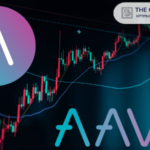Bitcoin, the leading digital asset, continues to dominate the cryptocurrency market. According to data from Glassnode, Bitcoin now holds a commanding 56% of the total market capitalization. This dominance has been rising steadily since the cycle low in November 2022. At that time, Bitcoin’s dominance was 38%, but it has since surged as capital flows toward more stable assets in the digital market.
This growth comes despite a period of choppy and volatile price action. Long-Term Holders (LTHs) have shown remarkable resilience during these times. Their preference to accumulate and hold onto their coins has remained consistent, showing no signs of wavering. As they continue to add to their positions, their influence on the market becomes more apparent.
Market Shifts & Bitcoin’s Influence
The increasing dominance of Bitcoin is a sign of a broader shift in the crypto market. As Bitcoin’s influence grows, other sectors are experiencing a decline. Ethereum, the second-largest digital asset, has experienced a slight decline in dominance, dropping from 16.8% to 15.2%. Stablecoins have faced a sharp decrease in their market share, falling from 17.3% to 7.4%. Similarly, altcoins have seen their dominance shrink from 27.2% to 21.3%.
Despite these shifts, major assets like Bitcoin, Ethereum, and stablecoins have all seen net positive capital inflows. This trend highlights investors’ preference for established assets in the face of market uncertainty.
The Major Asset Buy-Side vs. Sell-Side metric, which tracks capital shifts based on exchange inflows, further supports this trend. The market is now recording its first positive data point since June 2023, with a net buy-side regime emerging. This shift indicates that stablecoin inflows now exceed Bitcoin and Ethereum sell-side pressures, marking a potential turning point in the market.
Long-term holders HODLing
Despite the market’s turbulence, Long-Term Holders are locking in consistent profits, with a daily average of $138 million in sell-side pressure. This level of activity suggests that the market is finding a balance, as prices have remained relatively stable over the past few months.
The Realized Profit/Loss Ratio for LTHs provides further insight into this group’s behavior. Although this metric has declined from its peak, it remains elevated, indicating that LTHs are slowing their profit-taking activities.
The decline in profit-taking by Long-Term Holders mirrors previous market cycles, where similar declines were followed by price uptrend, except for the 2017-18 period, which led to a prolonged bear market.
The Long-Term Holder Spent Output Profit Ratio (LTH-SOPR) remains high, with coins locking in an average profit margin of 75%. The elevated LTH-SOPR, combined with the slowdown in LTH spending, suggests that HODLing behavior is outpacing selling. The 155-day threshold for LTH status coinciding with the March all-time high (ATH) indicates that a significant portion of supply acquired during this run-up is still being held.
Short-term holders face the pain of unrealized losses
On the other hand, Short-Term Holders (STHs) are feeling the pressure of recent market downturns. The Short-Term Holder Market Value to Realized Value (STH-MVRV) ratio, with a 30-day average, has fallen below 1.0. This drop suggests that the average new investor now holds an unrealized loss, a common occurrence during bull markets.
However, sustained periods where STH-MVRV trades below 1.0 can lead to investor panic, potentially triggering a more severe bearish trend. The growing unrealized losses among Short-Term Holders increase the risk of eventual capitulation, where these losses become actual as investors sell their coins at a loss.
STH-SOPR, which tracks realized losses by new investors, has also dipped below 1.0. This trend points to a degree of loss-taking by STHs, adding to the market’s current uncertainty. The emotional response of new investors to their unrealized losses can lead to overreactions, often resulting in excessive profit or loss realization at critical market points.
Bitcoin Dominance Hits Resistance, Altcoins Set to Rally
Investor Sentiment and Market Dynamics
The current market cycle bears some resemblance to the 2016-2017 period. During that cycle, relative metrics for losses remained below a consistent ceiling of 10%. This suggests that while new investors are facing financial stress, the overall impact on market sentiment may not be as severe as it seems.
The Relative Unrealized Loss metric for STHs, which measures the financial stress on new investors, remains relatively low compared to past capitulation events. This indicates that while there is some distress, it is not yet at levels that could trigger a broader market downturn.
The divergence between unrealized and realized losses highlights the moderate overreaction by new investors during recent corrections. While the magnitude of losses remains smaller than in previous cycles, the correlation between realized and unrealized losses suggests a market at a critical juncture.
As the market continues to navigate these investor cycles, the role of Long-Term Holders in maintaining stability becomes increasingly important. Their commitment to HODLing, despite the challenges, may provide the foundation for future market growth.











